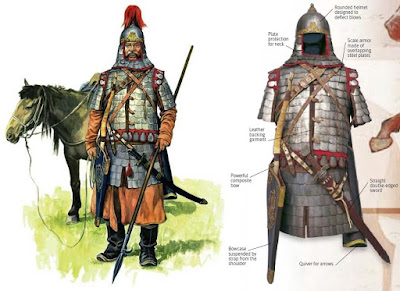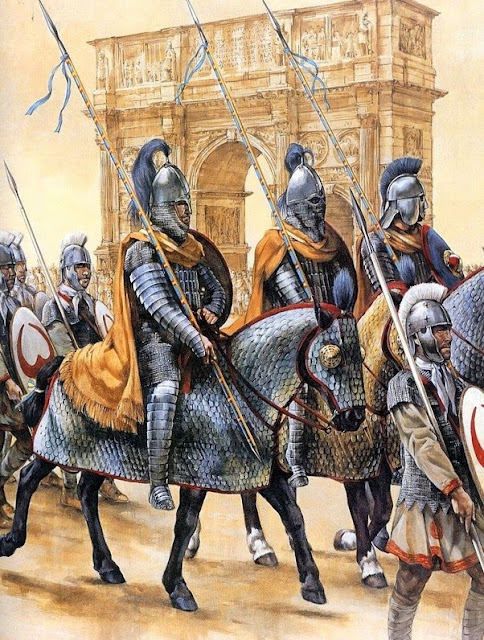Remember when I reviewed the mathematics for my random encounter tables? Today I have been thinking about the humble reaction roll. I use these and the morale rules (taken straight from Labyrinth Lord) in every game I run. I transplanted them into my Mathfinder game and they work fantastically. These days I would at a minimum hesitate to run a game without these kinds of rules.
So here are a few things I like to do to mess with reaction rolls. Some I've been doing for a while, but I was inspired to post about them when I remembered a
conversation on
d4 caltrops quite a while back. Ktrey really ran with the idea of overloading various rolls to create more information about a monster! This breakdown is a bit simpler but these techniques work well for me, and hopefully the reader may find them useful.
By The Numbers
Note: I've inverted the normal "lower is better" reaction roll for ease of use, so +1 is an improvement and -1 is a penalty. No need to confuse things.
Reaction Table (2d6):
2: hostile, attacks
3-5: unfriendly, may attack
6-8: neutral, uncertain
9-11: indifferent, uninterested
12: friendly, helpful
Normal PF stat modifiers are +1/-1 for every 2 points away from 10. Obviously I use the stat modifiers from Labyrinth Lord to match the reaction rules. This is funny because my players ask "What does my 'Reaction Skill' mean? Why is the bonus so low? Why can't I put points into it?" I have to explain it all every time.
LL's CHA modifier table looks like this:
3: -2
4-8: -1
9-12: +0
13-17: +1
18: +2
Not much of a bonus, but on a 2d6 roll it really changes the game. Jeff talks about this
here. Even a 13 CHA makes "instant hostility" impossible, and that 18-CHA paladin makes friends with a monster on 10, 11 or 12! As always with classic D&D, the rules
support each other if you use them all together: rolling stats straight down the line means having a character with the gift of gab is a lucky situation not to be overlooked.
Circumstance Modifiers
The basic thing I do to mess around with reaction rolls is a flat modifier based on the temperament of the creature, or circumstances in the dungeon or wilderness region. A few examples from my Land's End random encounter tables:
Lizardmen: Neutral, standoffish.
Jungle Bear: +2 to reaction. Rarely hostile unless provoked or near food/cubs.
Goblins: -1 to reaction. Jumpy and irritable from being cooped up inside the fort.
Mosquito Swarm: Thirsty!
Three basic possibilities: roll unmodified, roll with a bonus/penalty, or instant attack. These modifiers could be likened to a 'slide' of the probability curve up or down. Note how they can drastically change results at the extremes, so keep that in mind.
Reaction Rolls based on Modifiers (%):
| Modifier | Hostile | Unfriendly | Neutral | Indifferent | Friendly |
| -4 | 41.7 | 41.7 | 16.7 | 0 | 0 |
| -3 | 27.8 | 44 | 25 | 2.8 | 0 |
| -2 | 16.7 | 41.7 | 33.3 | 8.3 | 0 |
| -1 | 8.3 | 33.3 | 41.7 | 16.7 | 0 |
| 0 | 2.8 | 25 | 44 | 25 | 2.8 |
| +1 | 0 | 16.7 | 41.7 | 33.3 | 8.3 |
| +2 | 0 | 8.3 | 33.3 | 41.7 | 16.7 |
| +3 | 0 | 2.8 | 25 | 44 | 27.8 |
| +4 | 0 | 0 | 16.7 | 41.7 | 41.7 |
Going beyond +/-2 obviously can only happen by combining extreme CHA scores and situational modifiers. I include them for completeness and info-tainment purposes. Be careful when that 18 CHA PC starts taking the lead!
Limits
Another possibility. Less extreme than +/- modifiers, more consistent results. Simply determine the best or worst possible reaction the creature might respond with. I would use this only in specific cases, as I think it's more fun to have a wide range of possibilities. For example:
Charau-Ka: Demon-worshipping ape-men. Disdain other humanoids, especially hairless ones. Best reaction is Neutral.
An encounter with the Charau-Ka has the same chance of being instantly hostile and a huge chance of being neutral (6-12). That charismatic paladin won't make friends with them, but has
some chance of being able to defuse the situation without violence. This sets a limit to how well (or poorly) the encounter will go, while leaving some room for chance and stat modifiers to play their part. In a sense it is a halfway point between "instantly hostile" and a numerical modifier.
Quantum Reactions
A fun technique is to build other random determinations into your reaction roll. Look at this entry from my encounter tables:
Wildmen: Reaction roll for tribe
2: Wolf or Jackal. Hate everyone.
3-11: Any (1d6 - 1 Wolf, 2 Bear, 3 Caiman, 4 Bat, 5 Spider, 6 DM's choice)
12: Caiman. Welcoming to travellers, enjoy games & contests.
This combines the Limit technique with some baked-in detail about the game world. I am not 100% sure about this method yet, but it continues to work well for me in Land's End. The players don't know what the rolls do, it all happens behind the scenes. It
just so happens that all the belligerent locals wear wolf pelts, and the friendly ones crocodile-skin masks. In the middle, anything can happen and relationships will be determined by player character actions and circumstance. This does mean that you can have "indifferent" reactions from the Wolf tribe and "unfriendly" reactions from the Caiman tribe. These groups are still people like everyone else. Ultimately this saves time and allows the DM to absorb setting information with one glance at the local encounter table.
More Suggestions
The possibilities are endless. I have not tried these yet, but they might work:
Motivations. I am considering this in a dungeon I'm working on right now, but care must be taken. If you have an array of interests or goals for a group of monsters and
can't choose one, a reaction roll would be one way to decide. Eg: If the neanderthals want to make contact with the gnolls on level 2 and are also fighting with the goblins for control of the main corridors, perhaps the initial reaction roll sets the tenor for their attitudes throughout the dungeon delve: 2-5 indicates they are on war footing against the goblins and 9-12 suggesting diplomatic efforts towards the gnolls. Later on, other neanderthal parties will be in the midst of pursuing this same goal.
What are the monsters doing when you meet?
Hostile: patrolling territory, on a raid
Unfriendly: hiding loot, hunting, getting high on cave fungus
Neutral: guarding an area
Indifferent: trying to sleep, absorbed in a game,
Friendly: recovering from another fight, selling something, on a religious holiday
What condition are they in? A 'friendly' result might mean they're wounded or low on manpower, willing to bargain. A 'hostile' group is at full strength and ready to throw down. Modify the # encountered by 10-20% depending on the reaction roll.
Let's hear suggestions in the comments, or maybe some links to other folks that have discussed this!
***** Campaign Update *****
It had to happen: the Land's End game is going to slow right down since my brother just had his daughter. Cigars all around folks, I'm an uncle now!
As a rules-heavy, character-driven sandbox with only three players, it will be tough to play without him. My brother is one of the best players I've ever DM'd for, and his serpent oracle Vuk Thuul seems to drive the campaign along just by showing up. Luckily the drop-in game is taking off, new people keep showing up and we're having great fun.
There are still plenty of articles in my 'Drafts' folder about Land's End, including the last dungeon they explored but I'm going to be shifting my focus to the other side of the campaign world and the escapades of a brand-new group of 1st level scrubs trying to survive all my LotFP adventures and the encounters from
The Nocturnal Table!
Pursuant to this, YOU dear readers can expect more of:
-Play reports on various OSR modules as I run my players through them. I don't like "standard narrative play reports" but I am writing them up for my players anyway, so you'll get something between a review and a play report - what went wrong, what the players liked, what was easy to use, what was difficult, what I'd do differently next time.
-Making the Wilderlands my own, likely by borrowing more from
Book of the New Sun
-Nameless Cults and Gifts of Chaos
-The return of Fun on the Velvet Horizon
-More demon-summoning rules
-New Labyrinth Lord rules and less pathfinder content!
Next week we're back with High Medieval weapons & armour.










